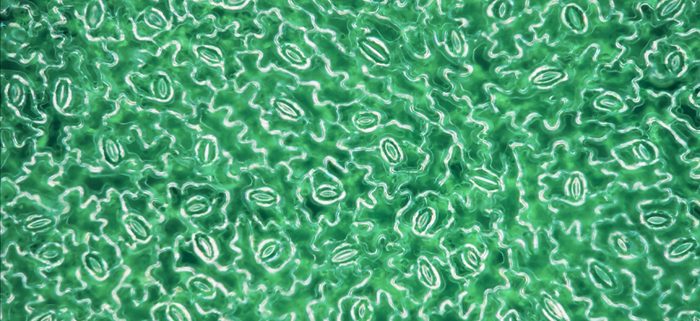Keep your mouth open––the Xanthomonas effector XopS prevents stomatal closing to facilitate bacterial entry into leaves
By Margot Raffeiner and Frederik Börnke (Leibniz-Institute for Vegetable and Ornamental Crops)
Background: Like other organisms, plants defend themselves against pathogens by activating immune responses. One of the first lines of plant immunity is to block the entry of bacteria into the leaf through pores in the leaf surface, called stomata. Stomata are essential to the plant, as they mediate the gas exchange required for photosynthesis and regulate transpiration and thus the distribution of water. As part of their defense system, plants recognize invading pathogens and in response close their stomata to prevent further bacterial entry. In addition, the defense response leads to the activation of immunity-related genes that eventually help to fight the pathogen. Many bacteria, like Xanthomonas campestris pv. vesicatoria, can overcome plant immunity by injecting so-called effector proteins directly into the plant cell. Effectors suppress plant defense at different levels (including expression of immunity genes) and promote disease.
Question: We sought to understand how bacterial pathogen effectors suppress plant defense responses to cause disease. Therefore, we aimed to investigate whether bacterial effectors could overcome stomatal defenses by affecting the activation of immunity genes.
Findings: We found that the Xanthomonas campestris pv. vesicatoria effector protein XopS prevents stomata from closing upon pathogen recognition and suppresses the expression of immunity genes. WRKY40, a transcription factor that suppresses defense gene expression, is usually degraded by the plant’s protein degradation machinery upon activation of immunity, but XopS physically interacts with and stabilizes WRKY40. XopS binding to WRKY40 interferes with its degradation and due to the higher amounts of WRKY40 protein, the plant cannot properly activate defense gene expression. This also affects expression of key genes required for stomatal closure and thus the stomata remain open making it much easier for the bacteria to get into the leaf.
Next steps: We are working to find the biochemical mechanism by which XopS stabilizes WRKY40. We also want to know whether other Xanthomonas campestris pv. vesicatoria effector proteins interfere with stomatal immunity.
Reference:
Margot Raffeiner, Suayib Üstün, Tiziana Guerra, Daniela Spinti, Maria Fitzner, Sophia Sonnewald, Susanne Baldermann and Frederik Börnke (2022) The Xanthomonas type-III effector XopS stabilizes CaWRKY40a to regulate defense responses and stomatal immunity in pepper (Capsicum annuum) https://doi.org/10.1093/plcell/koac032




